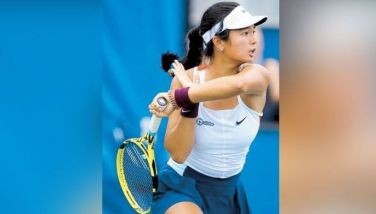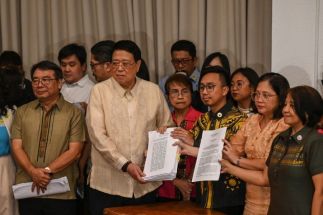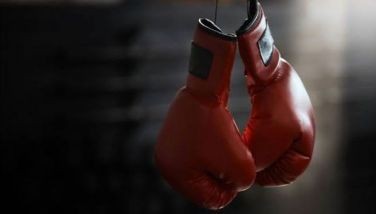Mequi questions state of arnis
A former chairman of the Philippine Sports Commission sought out this writer, questioning whether or not arnis should be considered an organized sport in the Philippines. He raises some important points, foremost of which is this: does saying that something is a sport really make it so? Specifically, he recalls asking in a 2006 piece, “Does a law make arnis a sport?”
“All sports are traditionally called games.” Dr. Aparicio Mequi quotes his original column from Jan. 29, 2006. “In 1891, Dr. James Naismith hung peach baskets at the end of the gym, and first game of basketball was played. In 1895, William G. Morgan, an instructor in the YMCA gym, wanting to provide a not-too-strenuous activity for sedentary middle-aged men, strung up a tennis net across the gym... the game of volleyball was born.”
Mequi recalls the process each of these games underwent before they were considered true sports. He listed eight points. Among them, the organization of and standardization of play and officiating, the formation of a national sports association (NSA), and the affiliation of that NSA with an international federation (IF).
“Arnis, as staged in the last 2005 SEAG, has no IF. In their words, arnis was held as an international event without an entity authorized to sanction its staging,” the long-time educator says. “This, I believe, is a violation of IOC rules and prescriptions.”
Mequi recounts that, as director of school sports in 1989, he had a meeting with Arnis Philippines president Raymond Velayo and the late Grandmaster Roland Dantes when both were still friends. The purpose of the meeting was to formally include arnis as a regular event in the Palarong Pambansa. According to Mequi, this never happened. And he posits why.
“There are several powerful and influential groups of arnisadors all over the country and it will be very difficult to unite them with the provisions of Republic Act 9850,” Mequi explains. “Grassroots promotion of arnis will create an “industry” involving production and sales of arnis paraphernalia: canes, protective gears, teaching materials, incomes from operation of clubs, training and accreditation of referees, staging of tournaments, the perks of foreign travel, and so on. These are the benefits enjoyed (and fought over) by officials of national sports association and the reason why there are so many who aspire to take control of NSAs. The leadership squabbles in the sports associations of archery, badminton, basketball, billiards, cycling, equestrian, football, swimming are proofs of this.”
Mequi elaborates on the calcification of the sport under the present dispensation.
“Arnis Philippines headed by Velayo is considered weak and inutile and does not enjoy the support of most arnis practitioners in the country,” Mequi declares. “But it is the NSA that is recognized by the POC. There’s no IF of arnis that is affiliated with the IOC. And worse, there’s no uniform rules and regulations prescribed for the conduct of competition, nor standards for protective gears and implements, to safeguard the protagonists when they wield their sticks, hitting each other in an attempt to win points.”
“In short, arnis as currently practiced today, and using the criteria that define sports, is not a sport.”
I’m certain that most, if not all arnis practitioners will disagree with Mequi on the point of whether or not arnis is a sport. But Mequi points out that the status quo is not satisfactory. That is Senate Majority leader Juan Miguel Zubiri, principal author of Republic Act 9850 making arnis the official sport of the Philippines, is making the bold move of forming the Alliance of Filipino Martial Arts with Harbour Centre’s Mikee Romero and this writer. the purpose would be to be all-inclusive, not divisive like Arnis Philippines.
Currently, most of the grandmasters in the Philippines have expressed support for the move, which will not undermine any of their styles, which have been successful in their own parts of the country, and have spread internationally.
There are at least two mainstream schools of thought. One is the traditional form of competition (similar to fencing), wherein the bout is stopped each time a competitor scores a point. The other is nicknamed the modern form (similar to boxing), wherein combatants battle for two or three minutes per round, and each combatant is assessed a score each round.
“My dream is for all styles to be included, and to have both the traditional and modern forms of competition recognized,” Zubiri told The Star. “I dream of every Filipino learning the sport, so that anywhere they go, they are recognized as Filipinos because they know our national sport.”
We are on the right track. Arnis is part of this year’s Palarong Pambansa in Tarlac, and the arnis law will make sure it will be taught in all schools, and not just as an elective PE class. And a few advertisers are starting to realize that, supporting arnis is as Filipino as anything else you can imagine.
- Latest
- Trending






























